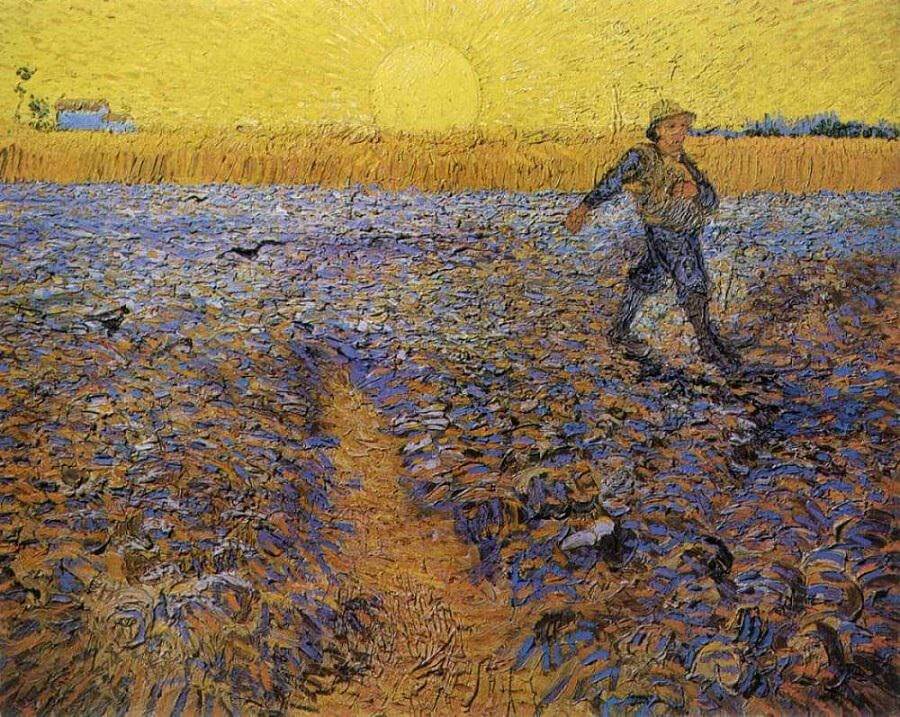Sower at Sunset, 1888 by Vincent Van Gogh

Peasant imagery and especially that of the 'Sower' was something that Van Gogh turned to numerous times throughout his career. His affiliation with this subject was partly as a response to the work of the romantic Realists such as Millet, and a reflection of his own socialist ideals. The sower in particular was a figure that Van Gogh saw in terms of representing the eternal cycle of agricultural life, of honorable endeavor and tradition, and symbolized these qualities to the artist.
The sun was also a symbolic element for Van Gogh, and in many of these paintings, it shines with an unearthly luminescence. Here he has created a great orb of light, from which short precise brushstrokes radiate outwards so that the whole sky becomes bathed in golden rags. The rest of the canvas is made up of short, quick brushstrokes that lend the ground a textured and slightly surreal feel. Barely perceptible are two crows that emerge from the fractured background, while the figure appears to be part and parcel of the land on which he works.




















